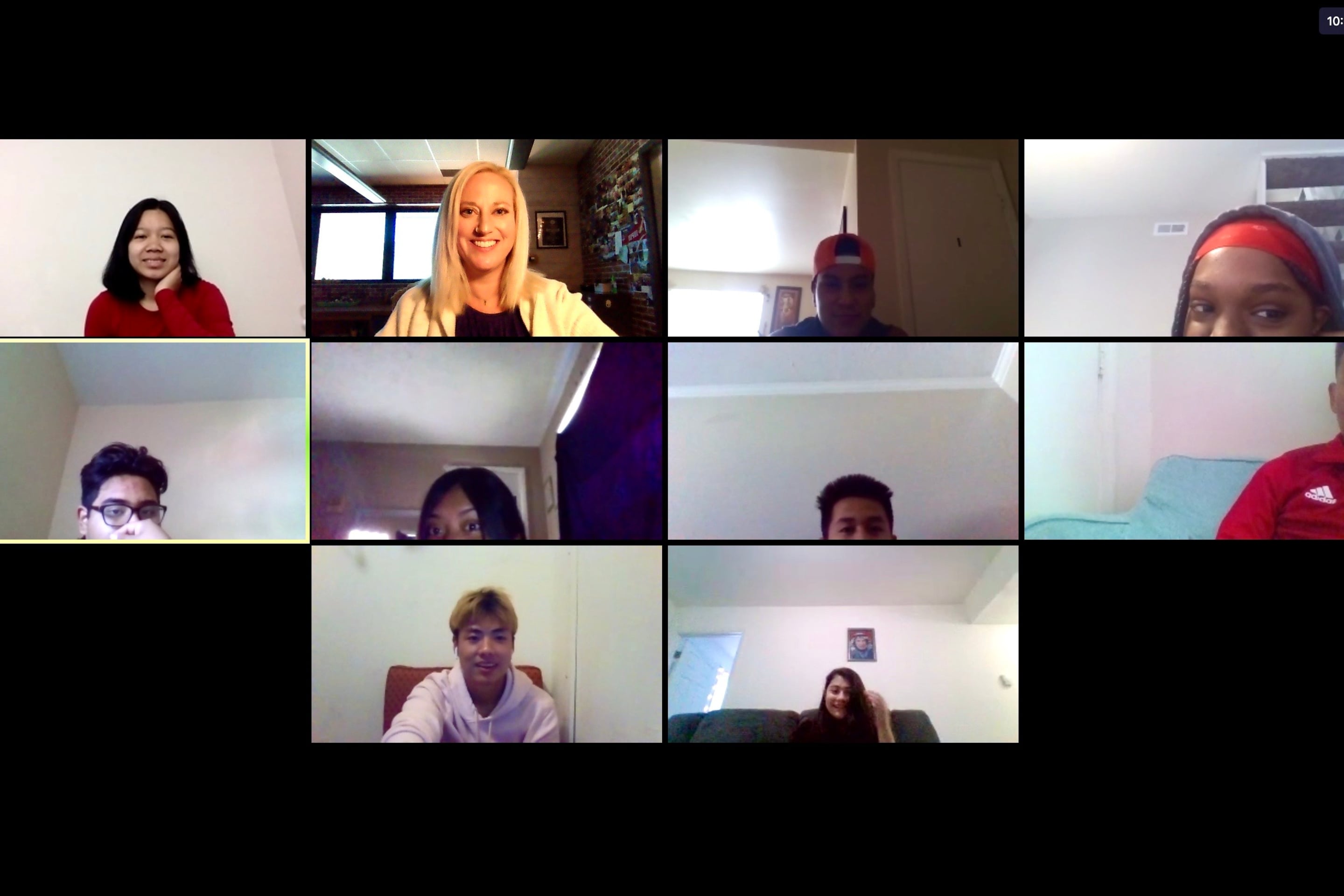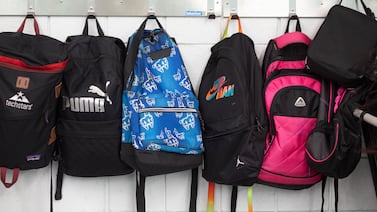When Indianapolis teacher Traci Vermilion noticed refugee students sometimes didn’t have money for field trips, sports fees, or summer school, she stepped in.
First, she and her husband covered the costs on their own. Then they created a nonprofit to help.
Through the Indiana Refugee Network, Vermilion has collected bicycles, furniture, and winter coats for families. The nonprofit also raises funds to cover small fees that can stand in the way of refugee students participating in opportunities that other students might take for granted, like the $50 cost for a cap and gown for graduation.
“I saw that these students and their families were struggling,” Vermilion said. “They had been here long enough that the direct support from the resettlement agencies had ended, but they still needed help.”
Vermilion teaches English language learners at North Central High School and serves as a board member for the Indiana Teachers of English to Speakers of Other Languages, known as INTESOL. She told Chalkbeat about why she’s worried about her students this year and how she’s teaching them about racism in America.
This interview has been lightly edited for clarity and length.
How are you feeling about this school year?
Fearful and worried. I’m not scared of COVID; I’m fearful for my students. English language learners already have to really work hard in school when it’s face-to-face and going virtual is hurting them academically. Students have expressed to me their apprehension about asking for help when it’s virtual because they are embarrassed. I check in with them and they are concerned about their grades, they don’t understand what is going on in their classes, and they just want to be back in person.
I’m fearful for their mental and physical health as well. Many of my students are feeling isolated, lonely, and depressed. All of these feelings on top of the academic pressure they feel and any other pressures and responsibilities they have at home. Students have parents who have lost jobs because of COVID-19, and so I worry about them having enough food. They don’t all have transportation to pick up food from their nearby school or food bank.
Having schools teach virtually puts a spotlight on the major inequalities in our education system. We can give students Wi-Fi access and computers, but that doesn’t solve everything.
What challenges do you expect to face this year teaching students learning English?
When students are in my class, they have a supportive, distraction-free, and relatively quiet environment. All of that, which I can control in person, is thrown out the window virtually. When students unmute their microphones, you can hear how loud their living environment is, making it difficult for them to concentrate.
Another challenge I have faced is being able to read body language. When I am teaching in person, I can read the room and know if the students understand the concept or if I need to reteach it in a different way. Virtually, it’s difficult, because high school students will say they understand and I can do multiple checks during the lesson. Then after I assess them and a majority have low grades, it’s clear to me that I messed up on my teaching delivery.
What has been your favorite lesson to teach remotely — and what about it works well?
Each week we have one class period where I present the start of the sentence, and they have to finish it. This usually takes the whole period because it opens the door to many discussions. This helps their writing and speaking, but it also helps me to really get to know how the students are doing.
I don’t ever want my students to feel like they just have one more assignment from me they need to check off, but instead they know why they are learning something and how it will carry over to their other classes. Right now I’m teaching them how to use their voices to advocate for themselves, something many of them feel very uncomfortable doing.
Will you be doing anything differently this year to account for the months of isolation — and in some cases grief and trauma — that so many families have been through?
Before school started, I hand-wrote a note and mailed it to each of my students. I wanted to establish a relationship with them and let them know I would be an advocate for them. I’ve had conversations with each of my classes where I would ask them a question, and they would privately respond to me in Zoom with their answers. I think this is probably one of the first times that I heard a majority of students admit they like school and want to know if they just come to the school if I’ll let them in.
I am also in communication with many families through the app TalkingPoints where I am able to touch base with the primary caregiver in the house and find out how they think things are going for their student and how I can best support them.
Do you plan to talk with your classes about the antiracism protests that took place following the police killing of George Floyd?
We have had conversations about the antiracism protests and the killings of innocent black people. Many students admitted that they weren’t aware of how racist America was until they arrived and either saw it or experienced it.
Many had never had conversations with their family or friends about police brutality or how to respond when being pulled over by law enforcement. I know the reality is that parents of Black children have these types of conversations early and often, and the idea that my students — 99% of whom are people of color — haven’t had these types of conversations alarmed me. I asked them if they thought it would be helpful to them to have someone talk to them about how to handle situations like this. Every student in every class said yes.
I hate that I have to worry about the safety of my students of color when they are pulled over or questioned by police officers, but it’s the reality. They are currently working on a reflective writing piece about what we have discussed so far.
Tell us about your own experience with school and how it affects your work today.
I was a terrible student. I remember being in elementary school and not being able to read at grade level and being pulled out of classes to go to speech therapy because I couldn’t pronounce the “R” sound and had a terrible stutter.
I didn’t know how to study or advocate for myself. I slid through high school with a C average. However, not going to college was never a question for me. I knew I would go, but the first semester was a rude awakening. It was then that I learned if I studied the right way and advocated for myself, I was actually a good student.
I always tell my students this story because I want them to know that they have the ability to learn anything, they just need to find out which way works best for them. I’m there as their teacher to help them discover that, teach them how to advocate for themselves, and let them see the potential they have.
What gives you hope in this moment?
This generation of students is passionate about fighting for what is right. Whether it be dismantling systemic injustice, gun reform, advocating for equality, or climate change, I fully believe that this generation is going to shift our future. It may not happen in traditional ways, but they will get it done and that gives me a lot of hope.









